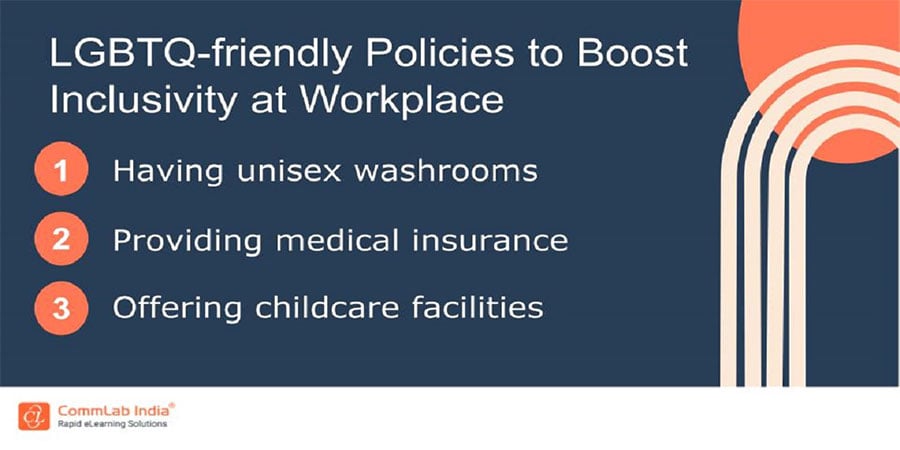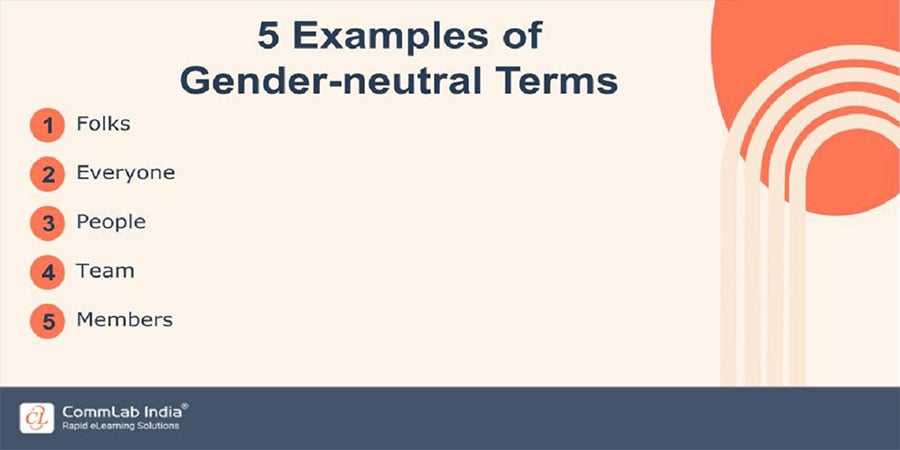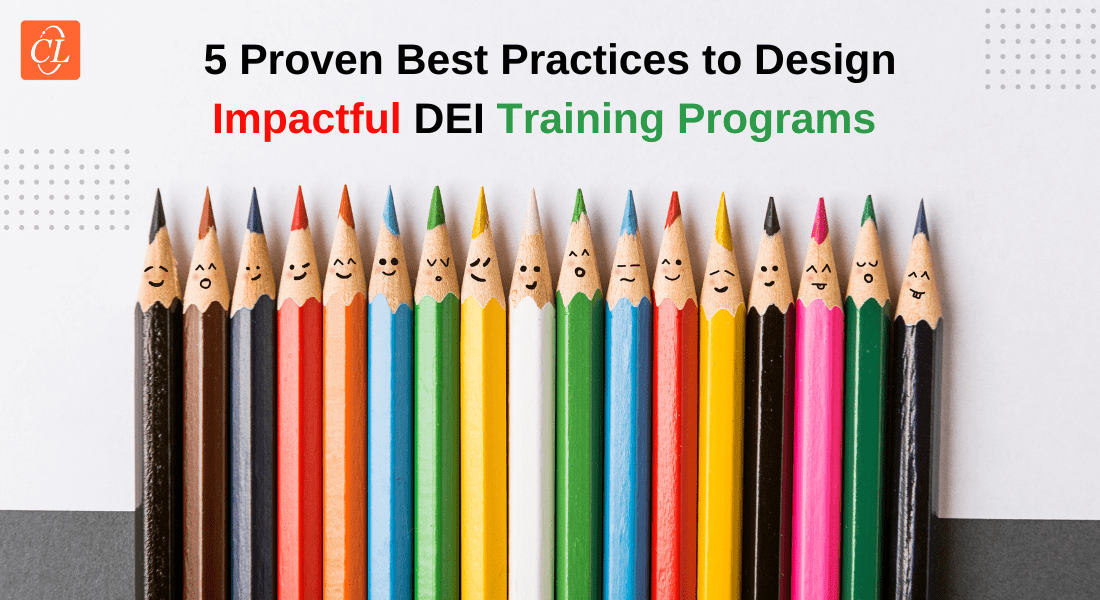Diversity, Equity, and Inclusion (DEI) at Workplace [What, Why, How + Relevant Corporate Training]
![Diversity, Equity, and Inclusion (DEI) at Workplace [What, Why, How + Relevant Corporate Training] Diversity, Equity, and Inclusion (DEI) at Workplace [What, Why, How + Relevant Corporate Training]](https://blog.commlabindia.com/hubfs/Imported_Blog_Media/Diversity-Equity-and-Inclusion-DEI-at-Workplace-What-Why-How-Relevant-Corporate-Training.jpg)
As Pride Month is here, it’s important to reflect on how we can embrace and celebrate diversity, equity, and inclusion (DEI) in the workplace. A diverse and inclusive workplace not only benefits employees but also drives innovation along with fostering a sense of belonging. In this blog, I’ll discuss the importance of diversity, equity, and inclusion (DEI) in the workplace, and explore ways and relevant corporate training which you can leverage to create a more inclusive work environment, mainly focusing on the LGBTQ community.
Foster DEI in the Workplace Through Corporate Training!
Here’s how you can do so:
- Educate yourself and other employees
- Create LGBTQ-favorable policies and support systems
- Use inclusive language
- Support and celebrate diversity
- Take strict action against discrimination
Before we jump headfirst into the ways, it’s essential to understand what diversity, equity, and inclusion (DEI) mean.
So let’s begin!
What Is Diversity, Equity, and Inclusion (DEI)?
In simple words, diversity refers to the differences among people in the workplace, including differences in race, ethnicity, gender, sexual orientation, age, religion, ability, and more. Next up is equity. It ensures that everyone in the organization has access to the same opportunities, regardless of their background or identity. Lastly, inclusion focuses on creating an environment where every employee feels valued and respected for who they are.
→ Download Now: How L&D And Business Can Align To Conquer The Future Of Work
Now that you are clear with what each term refers to, it’s time to know why you should focus on incorporating them in your workplace.
Are you ready? Let’s find out!
Why Should You Focus on Diversity, Equity, and Inclusion (DEI)?
Embracing diversity, equity, and inclusion in the workplace is crucial for several reasons. Here, I’ve enlisted a few reasons that deserve attention:
- Incorporating the DEI framework at your workplace enables you to attract and retain top talent.
- Having a diverse workforce brings different perspectives, experiences, and skills to the table. It can be really beneficial in augmenting creativity and innovation.
- Promoting DEI leads to increased employee engagement and healthy interactions, which is then reflected in higher productivity and job satisfaction.
- Lastly, creating an inclusive workplace fosters a sense of belonging among the employees. This reduces the likelihood of discrimination, which can otherwise negatively impact the mental health and well-being of the employees. On the contrary, DEI boosts positive relations among coworkers and strengthens teamwork.
With the “why” aspect of DEI sorted, it is time to take up the next big question.
How to Foster DEI in the Workplace through Relevant Corporate Training?
Given below are some useful strategies to help you facilitate a more diverse and inclusive work environment in your organization (specifically with regard to the LGBTQ community):
Educate Yourself and Other Employees
First things first! If you want to facilitate an inclusive workplace, education is the key! That’s right. Change starts with learning and educating. So organize and attend training sessions and workshops that focus on LGBTQ issues. Also, encourage your colleagues to do the same. The more knowledge you have about LGBTQ terminology, experiences, and struggles, the better you will be able to understand your LGBTQ coworkers.
To ensure the right start and facilitate an all-inclusive work environment, you can incorporate the abovementioned topics into your onboarding training and compliance training. Moreover, you can provide training on gender identity and expression, sexual orientation, work microaggression, culture, etc.
Create LGBTQ-Favorable Policies and Support Systems
To foster an inclusive work environment, creating policies that support LGBTQ employees is an essential step. It not only shows that you respect and value their identities but also helps them feel more welcomed and accepted. To initiate the change, you should implement LGBTQ-favorable policies. Given below is an infographic containing some ideas to help you get started.

Like having gender-neutral washrooms, offering employees health insurance, and even providing the required resources for employees who are transitioning. Moreover, the policies should also ensure an equal opportunity to learn, grow, and make progress in their careers.
The abovementioned policies are a good start but that’s not all. Along with progressive policies, you also need to work toward ensuring positive support systems for the LGBTQ members of your organization. For that, you can provide a mentorship program, a confidential reporting system for discrimination or harassment, etc. This will help the employees feel safe and even motivate them to connect, share experiences, and receive help when needed.
You can conduct leadership programs that train leaders and people in the management and policy-making process to draft and even review policies for them to be more effective and LGBTQ-inclusive. Apart from that, you can offer training to keep them informed and updated about the success and challenges of the LGBTQ community.
Use Inclusive Language
I’m sure you’d agree that the way we speak and communicate has a huge impact on others. It offers them an insight into how we perceive them and feel about them. Isn’t it? Therefore, using an inclusive language is a must. It plays a key role in fostering an accepting and welcoming environment in the organization.
You can start with something as simple as avoiding the use of gendered language, such as “ladies and gentlemen.” Instead, try to use gender-neutral terms.

Similarly, make it a point to use someone’s preferred pronouns. Don’t just assume their gender or sexual orientation. This shows that you respect and acknowledge their identity, and makes a huge difference in making them feel seen and valued.
To create more awareness about the same, you can conduct various training sessions on verbal and non-verbal communication, use of language, and even leadership training. This will help leaders as well as employees to be more considerate and respectful of others’ identities and choices, thereby building a more productive and healthy workplace.
Support and Celebrate Diversity
Support doesn’t necessarily come from policies and groups and language alone. You can also promote a culture of diversity and inclusion by celebrating and being a part of what really matters to your employees. So take the initiative by celebrating Pride Month and other LGBTQ events to show your support and respect.
Apart from that, there are plenty of other ways to do so. You can display pride flags, LGBTQ symbols, host events and fundraisers, and even create social media campaigns to promote awareness. Before you get carried away in the spirit of celebration, it’s really important to keep in mind that you are respectful and not tokenizing.
Therefore, avoid stereotyping or over-generalizing the LGBTQ community. In fact, you can invite members of the LGBTQ community as speakers for your training sessions, consider partnering with LGBTQ organizations, hire LGBTQ performers, etc.
Take Strict Action Against Discrimination
Unfortunately, discrimination and harassment still occur in the workplace. And it is so unfair and downright wrong. Therefore, it’s essential to take quick and strict action against any instances of discrimination, harassment, and microaggression, that come to your notice. This will help you create a safe space for employees to report incidents and ensure that you take their issues seriously. Apart from that, hold everyone accountable, including managers and executives. Be very clear and firm in conveying the message that discrimination and harassment in the workplace won’t be tolerated.
You can even offer corporate training to your employees to foster a more cordial and friendly work culture. Leveraging different training methods like scenario-based learning, storytelling, gamification, etc., can help employees work on their decision-making and problem-solving skills. In fact, they even get an opportunity to think about their decisions as the consequences unfold.
Check out this amazing video that will provide you with 5 storytelling tips to improve the effectiveness of your eLearning course.
Parting Thoughts!
Creating a diverse, equitable, and inclusive (DEI) workplace is an ongoing process that requires intentional effort and continuous learning. As we celebrate Pride Month, let’s take the opportunity to embrace and celebrate diversity, equity, and inclusion in the workplace. We’ve already discussed the five major points that are sure to contribute toward a healthy, welcoming, positive, supportive, and inclusive workplace for all employees, including the members of the LGBTQ community. So try them out! Along with that, check out the eBook below on how you can align L&D and business goals to achieve success!



![The Importance of Diversity, Equity, and Inclusion (DEI) in Corporate Training [Infographic]](https://blog.commlabindia.com/hubfs/Imported_Blog_Media/The-Importance-of-Diversity-Equity-and-Inclusion-DEI-in-Corporate-Training-Infographic.jpg)
![Integrating Diversity, Equity, and Inclusion (DEI) in Learning and Development Culture [Slideshare]](https://blog.commlabindia.com/hubfs/Imported_Blog_Media/Integrating-Diversity-Equity-and-Inclusion-DEI-in-Learning-and-Development-Culture-Slideshare.jpg)
